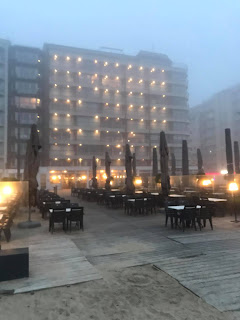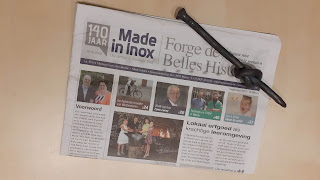Reclaiming reclaimed land
Text: Since medieval times, land is being reclaimed from the sea. Here (on the picture), at the edge of the plateau of Izenberge, the old land polder of Veurnambacht is located. This is one of the first polders ever reclaimed from the sea in Flanders. From the moment of land reclamation onwards, the land has been used for pasture (and a bit cropland, although the clay soil is not ideal for this), peat excavation and settlement. Today, the area comprises of Veurne and some small picturesque villages such as Lampernisse that are surrounded by wet grasslands. In most places the old tidal channels (‘krekerige’ in the local dialect) are not present anymore. However, one ‘fossil’ tidal channel is conserved. Until a few decades ago, the area surrounding this channel has been used as pasture grassland. However in the end of the 20 th century, the Flemish Land Company (Vlaamse Landmaatschappij) has reclaimed this land from agricultural use in a land consolidation effort. Now the tidal chann

